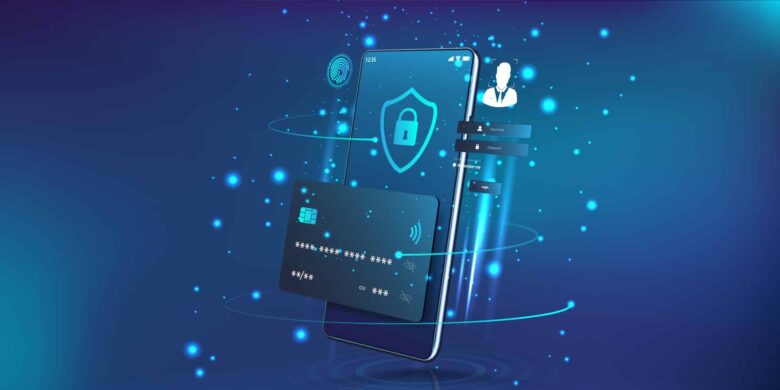For millions of people worldwide, mobile payments and digital wallets have evolved from a futuristic possibility into a permanent fixture of everyday life. What began as a rudimentary solution where smartphone technology replaced cash and debit cards has grown into a mature financial ecosystem that is transforming the way business is done at every level. From small coffee shops to large retail stores, businesses of all sizes are using these digital payment systems to meet growing customer demand for faster and more convenient transactions. This trend is one of the biggest changes in the way we handle money since the advent of the credit card decades ago.
A Technological Revolution
Mobile payments are made possible by the seamless integration of several advanced technologies. These technologies make transactions secure and instant. Near-field communication (NFC) technology allows smartphones to interact with payment terminals with just a few taps. QR codes, on the other hand, are compatible with virtually any device with a camera.
Behind these common interfaces, advanced encryption algorithms and tokenization systems ensure the security of critical financial information in every transaction. Cloud computing allows data to be processed and synchronized across multiple devices in real time. This means your payment information is always up-to-date and easy to find, regardless of which device you’re using. These new technologies make mobile payments not only possible but also more secure and reliable than other payment methods.
Easier Customer Experience
The main reason people love mobile payments is that they simplify the shopping process in ways other methods can’t. Users can complete transactions with a simple tap or scan, eliminating the need to fiddle with cards or count cash. Digital wallets centrally manage all your payment methods, loyalty cards, and even boarding passes. This keeps your wallet organized and reduces the risk of losing your key card.
Users can easily access payment apps with biometric authentication (such as fingerprint scanning or facial recognition) because they work with existing smartphone features. This convenience extends beyond the checkout process. Many digital wallet platforms offer features like expense tracking, receipt storage, and automatic purchase categorization, allowing users to better manage their money.
Security Measures
Initially, many people were concerned about the security of mobile payments, but digital wallets now offer more comprehensive protection than other payment methods. Advanced encryption ensures that card numbers are never stored on the device or transmitted during transactions. Instead, a unique token is used that is useless to thieves. Biometric authentication adds an extra layer of protection that is virtually impossible to copy.
Device-specific security features, like the capability to remotely wipe the phone’s data, safeguard users in the event of a loss or theft. Many mobile payment systems also monitor for fraud in real time and alert users when transactions occur, making it easy to identify and report suspicious activity. These security features work together to make mobile payments one of the safest ways to do business.
Global Impact
The widespread use of mobile payments has had a domino effect that extends far beyond the convenience of individual purchases. It has transformed the way economies function in both developed and developing countries. Mobile payment systems have given millions of people in countries where traditional banks have limited access to formal financial services a first. People use these services for a variety of purposes, ranging from small business transactions to international money transfers.
Cash payments are no longer the exception. In many major cities, cashless payments have become the norm. T This evolution marks a shift in the way people shop. This change has forced traditional banks to quickly come up with new ideas. T This phenomenon has led to collaborations between banks, technology companies, and retailers to develop new hybrid payment systems. Numerous digital wallet platforms exist worldwide, making it easier for businesses to expand across borders and for people to shop in stores in other countries.
Future Trends
Digital wallets and mobile payments have revolutionized the way we handle money. They continuously enhance the efficiency, security, and user-friendliness of the financial system. The rapid adoption of these technologies demonstrates that people are willing to use digital solutions that make their lives easier, safer, and more convenient.
As technology advances and global infrastructure improves, mobile payments are likely to become increasingly important in our daily lives. Often this could make cash and traditional debit cards obsolete. Mastering and adapting to this digital payment revolution isn’t just an option for businesses and consumers; it’s a necessity for participating in the modern economy.
FAQs
1. Are mobile payments safe?
Yes, mobile payments are generally more secure than traditional card payments because they use modern encryption, tokenization, and biometric authentication to protect your financial data.
2. Do I need an internet connection to pay with my phone?
Most mobile payment systems require an internet connection, but some NFC-based payment methods can work without an internet connection for a short period and sync once the connection is restored.
3. C May I pay with my phone in any store?
Any store that accepts contactless payments can accept mobile payments, and more and more retailers are using this payment method.
4. What if I lose my phone?
Most digital wallets can be locked remotely, and biometric locks prevent unauthorized access. This makes losing your phone less dangerous than losing a traditional wallet.
5. Do mobile payment apps charge fees?
Most major mobile payment providers don’t charge fees for basic transactions, but some advanced features or business accounts may incur fees.




